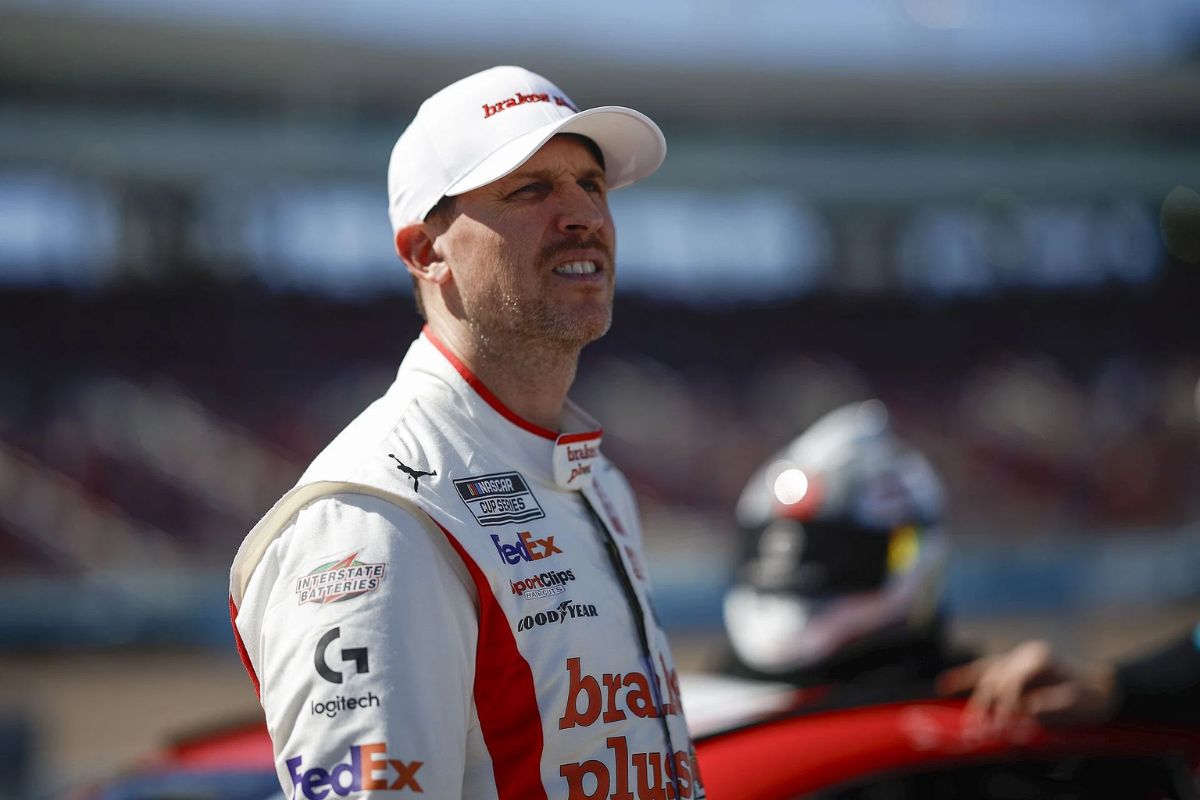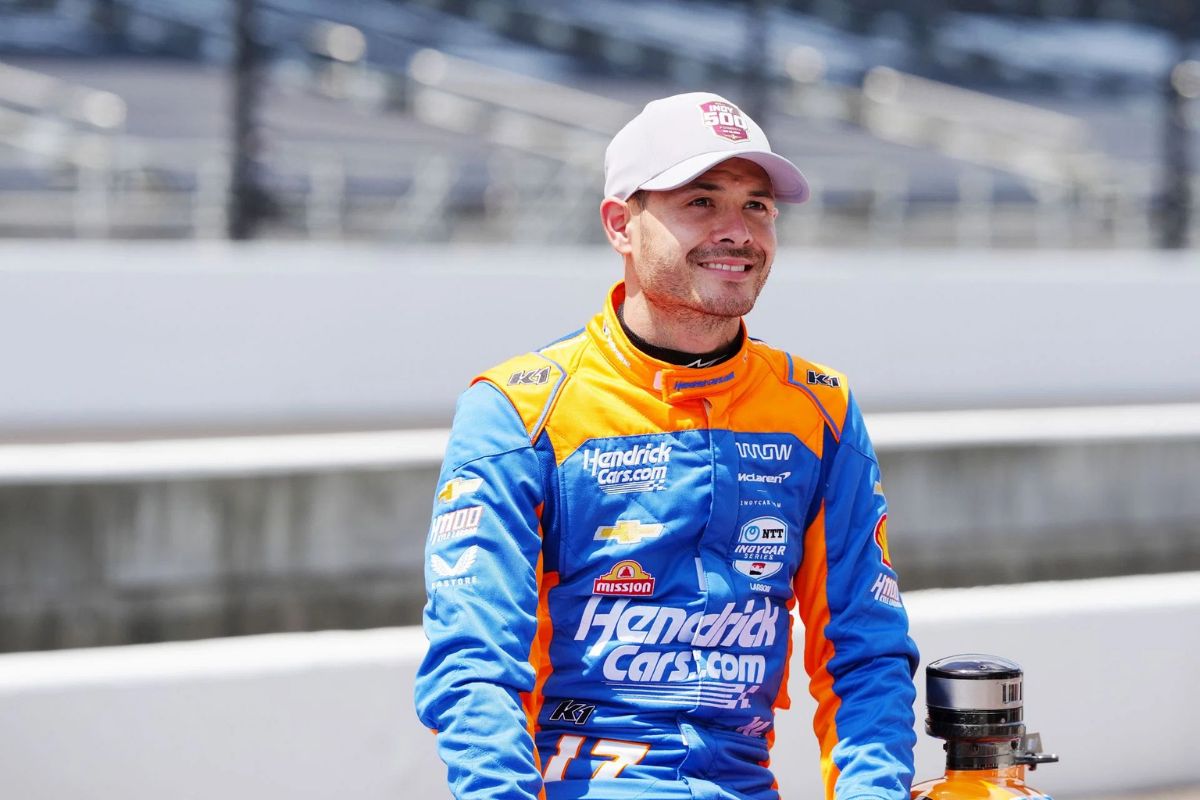NASCAR Drivers Overcoming Their Criticism: In the age of social media, NASCAR drivers like Chase Elliott are not merely competitors on the track but also vocal participants in an online culture rife with criticism and trolling. Elliott’s adeptness at transforming negativity into witty exchanges shows a tactical approach that humanizes and promotes the sport. His team echoes this sentiment, fostering a connection with fans that transcends traditional boundaries. However, the implications of such interactions raise questions about the balance between authenticity and professionalism in public discourse.
Key Highlights
- Chase Elliott uses humor and grace to respond to Twitter trolls, maintaining a positive public image.
- Denny Hamlin directly engages critics online, using banter to assert his skills and humanize himself.
- Kyle Larson addresses personal insecurities humorously, fostering relatability and rapport with fans.
- Martin Truex Jr. disarms critics with humor, acknowledging competitive dominance while engaging audiences effectively.
- NASCAR drivers use social media criticism as an opportunity for authentic interactions, enhancing fan engagement.
NASCAR Drivers Respond to Criticism
In NASCAR, drivers often face a barrage of critiques from fans, particularly on social media platforms like Twitter. The interaction between athletes and fans has intensified, creating a unique dynamic where drivers must manage support and criticism.
Recently, NASCAR stars Chase Elliott, Denny Hamlin, Kyle Larson, and Martin Truex Jr. displayed their adeptness in managing negative feedback, showing resilience and professionalism in the face of online hostility.
Chase Elliott’s responses to disparaging tweets reveal a commendable blend of humor and grace. When labeled as “the most boring man on earth,” Elliott expressed gratitude, transforming a potential insult into a moment of levity. His ability to acknowledge criticism without taking it personally shows a profound understanding of the sport’s culture and the importance of maintaining a positive public persona.
“I appreciate that…Thank you, it means a lot,” – (Elliott)

Another tweet, which openly wished for his loss, was met with a similarly composed reply, as Elliott noted that the sentiment “could be worse.”
This interaction represents a broader trend among athletes who are increasingly taking control of their narratives, using social media to engage with fans and counter negativity. By responding in a measured manner, these drivers diffuse hostility and reinforce their brand as approachable and resilient figures.
Denny Hamlin’s Reaction
Amidst the online chatter surrounding NASCAR, Denny Hamlin‘s reactions to fan criticism show a savvy approach to handling negativity. Engaging directly with his detractors on social media, Hamlin shows a blend of humor and assertiveness that deflects criticism and invites conversation.
For instance, when a user tweeted, “Denny Hamlin is more hated than Kyle Busch and I’m all for it,” Hamlin replied with a lighthearted quip: “Well Kyle taught me well.” This response acknowledges the sentiment and capitalizes on his relationship with another polarizing figure in NASCAR, thereby reframing the narrative surrounding his reputation.
In another instance, when confronted with a comment questioning his driving skill—“My opinion is you’re (Hamlin) really not that good of a driver after racing ten thousand races”—Hamlin retorted with pointed confidence: “Well I might not be that good of a driver but certainly better than you are.” This comeback highlights his ability to engage in banter while asserting his credentials as a professional driver.
By utilizing humor and direct engagement, Hamlin effectively diminishes the impact of critics and reinforces his status in the sport. Such interactions humanize Hamlin and cultivate a persona that resonates with fans who appreciate authenticity.
Kyle Larson’s Response
Kyle Larson’s engagement with online commentary reflects a thoughtful approach to public perception and self-image within the NASCAR community. By addressing a tweet about his height, Larson humanizes himself and shows a keen awareness of how physical attributes can be scrutinized in the world of motorsport. His response, “I am short…Five-six is pretty short but it’s taller than some drivers,” shows his ability to handle criticism with humor and grace, turning a potentially negative observation into a relatable moment.
In an era where social media can amplify criticism, Larson’s response serves as a model for athletes going through public discourse. By accepting his identity and responding with wit, he deflects negativity and fosters a sense of community among fans and peers. This approach may ultimately strengthen his brand and resonate with an audience that values authenticity.
Martin Truex Jr.’s Humor and Chase Elliott’s Michigan Pursuit
The dynamics of NASCAR’s digital engagement extend beyond Kyle Larson‘s witty responses, showing the personalities of other drivers like Martin Truex Jr. and Chase Elliott.
Truex Jr. has shown a remarkable ability to utilize humor in addressing criticism, effectively disarming detractors with his frankness. When confronted with a tweet claiming his races are “the most boring three hours of my life,” Truex Jr. acknowledged the dominance of his performances while subtly reminding fans that such results are integral to the sport.
“A lot of the races we win, I would admit we’ve dominated. But I mean, what are you supposed to do, even in the midst of a rivalry.” – (Truex Jr.)
His playful retort to another user, who expressed hatred towards him, showed a level of engagement that resonates with audiences, fostering a sense of relatability amidst the competitive landscape.
“This comes from Kyle….Well, Kyle, I’ve never met you, and I don’t hate you, so what’s your problem? That’s a good one. Too funny.” – (Truex Jr.)
In contrast, Chase Elliott, the No. 9 Chevrolet driver, embodies the relentless pursuit of victory, particularly as he readies for a crucial race at Michigan International Speedway.
With Ford having secured the last nine wins on their home turf, Elliott’s ambition to break this streak highlights personal goals and a broader narrative of competition within NASCAR. Remarkably, his impressive record of three runner-up finishes and an average finish of 10.15 in 13 races at Michigan reveals a consistent threat on the track.
Currently positioned in the third spot in the points table, just six points adrift of teammate Kyle Larson, Elliott’s performance this season, including a win at Texas Motor Speedway, emphasizes his potential to seize a notable milestone at Michigan—one that could redefine his career path.
News in Brief: NASCAR Drivers Overcoming Their Criticism
In NASCAR, driver interactions with social media criticism reveal a subtle strategy that emphasizes humor and resilience. Chase Elliott’s adept handling of trolling shows a broader trend among drivers, such as Denny Hamlin and Kyle Larson, who utilize wit to deflect negativity.
This approach preserves their professional image and improves fan engagement, fostering a sense of community. Ultimately, these responses transform potential disputes into constructive dialogues, showing the evolving relationship between athletes and their audience in the digital age.
ALSO READ: Most Successful NASCAR Driver and Team at Michigan International Speedway


